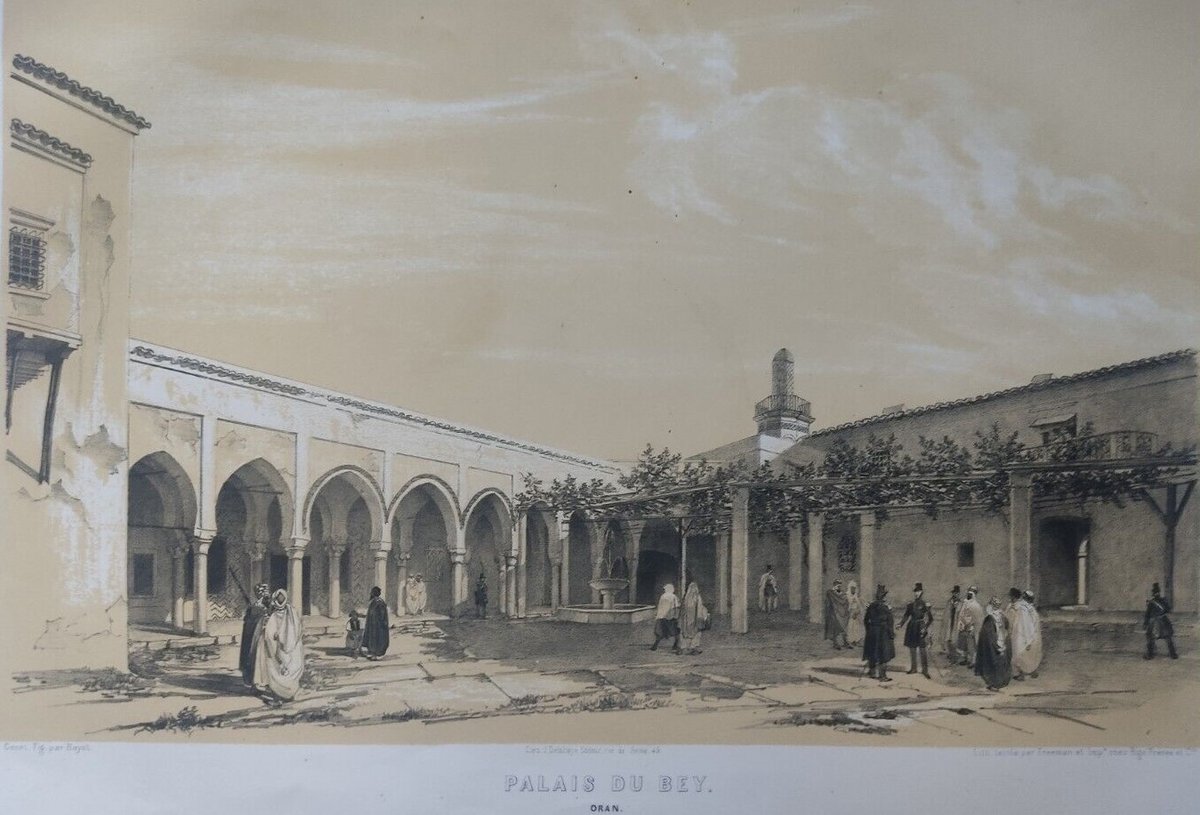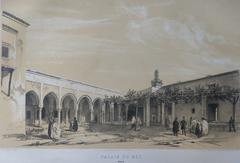
Visiting Bey’s Palace in Oran: Hours, Tickets, and Tips
Date: 19/07/2024
Introduction
Table of Contents
- Introduction
- History of Bey’s Palace
- Restoration and Preservation Efforts
- Cultural and Historical Exhibits
- Visitor Experience
- Practical Visitor Information
- FAQ
- Conclusion
History of Bey’s Palace
Origins and Early History
Bey’s Palace was constructed in the 18th century during the Ottoman rule of Algeria. The Bey of Oran, Mohamed El-Kébir, commissioned the palace in 1792 as part of efforts to fortify and embellish the city, which had been recaptured from Spanish control in 1791. The palace served as the residence of the Bey, the Ottoman governor, and as the administrative center of the province.
Architectural Significance
The architectural design of Bey’s Palace showcases a blend of Moorish and Ottoman styles, characterized by intricate tile work, ornate wooden ceilings, and expansive courtyards. The complex includes several buildings, courtyards, and gardens, each serving different functions. The main building, Dar El-Soltane, was the official residence of the Bey and his family. The palace also includes a mosque, a hammam (bathhouse), and administrative offices.
The French Colonial Period
In 1831, French colonial forces captured Oran, repurposing Bey’s Palace for various administrative and military functions. Despite modifications, many original architectural features were preserved, allowing visitors to appreciate its historical significance.
Post-Independence Era
Following Algeria’s independence from French colonial rule in 1962, Bey’s Palace was designated as a national heritage site. The Algerian government undertook efforts to restore and preserve the palace, recognizing its historical and cultural importance. It was opened to the public as a museum, showcasing the rich history and heritage of Oran and the broader region.
Restoration and Preservation Efforts
Bey’s Palace has undergone several restoration projects to preserve its historical integrity and architectural splendor. These efforts, supported by the Algerian government and international organizations, have focused on repairing structural damage, restoring original decorative elements, and improving visitor facilities.
Cultural and Historical Exhibits
The palace now serves as a museum housing a collection of artifacts that highlight the history and culture of Oran. Exhibits include historical documents, photographs, and artifacts from the Ottoman and French colonial periods. The museum also hosts cultural events and educational programs.
Visitor Experience
Visitors can expect a rich and immersive experience, exploring the historical and architectural wonders of Bey’s Palace. Guided tours are available in multiple languages, and the palace’s gardens and courtyards provide a tranquil setting. The museum’s exhibits offer a comprehensive overview of the history and culture of Oran.
Practical Visitor Information
Tickets and Visiting Hours
Travel Tips and Nearby Attractions
Bey’s Palace is located in the heart of Oran, making it easily accessible. Nearby attractions include the Santa Cruz Fort, the Great Mosque, and the Oran Regional Museum. Consider visiting these sites to make the most of your trip.
Accessibility
The palace is equipped with modern visitor facilities, including restrooms, a gift shop, and a café. Efforts have been made to ensure accessibility for all visitors, including those with mobility challenges.
FAQ
Q: What are the visiting hours for Bey’s Palace?
Q: How much does it cost to visit Bey’s Palace?
Q: Are guided tours available? A: Yes, guided tours are highly recommended to fully appreciate the palace’s history and significance. They are available in multiple languages.
Q: Is the palace accessible for visitors with mobility issues? A: The palace is partially accessible. Contact the administration for specific accessibility options.



